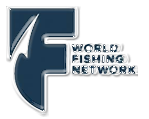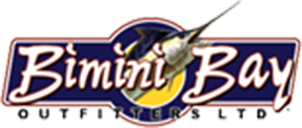Grouper bottom
Finding Good Grouper Bottom
By CAPT. BILL MILLER
One of the southeast’s most popular saltwater fish is the grouper. Unlike pelagics such as kingfish, tuna and dolphin, grouper generally remain in one area with the exception of seasonal migrations into deeper or shallower water. The key to finding the grouper jackpot is locating productive bottom.
Examples of likely grouper spots include rock formations, structure such as a wreck or sharp channel edge, rocky ledges with washouts and deepwater springs offering cover and a temperature change. Also, any area that holds bait schools will attract grouper.
As for conditions, during hot summer months, most grouper move to deeper, cooler water. Spring and fall finds them closer to shore. Clear water is a must for grouper, as mud irritates their gills and prompts them to move.
By far, the best way to find good grouper bottom is through charts with the GPS and LORAN coordinates. They won’t always put you directly over the fish, but they’ll get you to the general area. Books and computer programs with productive coordinates are also available.
Of course getting current numbers from friends usually produces the best results because of their accuracy and timeliness.
Keep your depth recorder operating when you’re running and fishing. You may see hard bottom, ledges, and wrecks you never knew existed. In very clear water, with good sunlight and polarized glasses, you can often see the hard bottom structures. They’ll appear as a dark purple or black spot.
Sea turtles, especially big loggerheads, usually live around rocky bottom, so spotting one that has come up for air is a lucky break. Search the area with your depth recorder and you’ll probably find a new grouper spot. Similarly, head boats (aka “party boats”) will indicate good bottom. The only drawback is that the area might be heavily fished.
Trolling large plugs such as MirrOlure, Mann’s Stretch 30, Rebel Jawbreakers and Magnum Rapalas on planers or downriggers will help you locate grouper concentrations. On a strike, throw a marker buoy, return and search the spot with your bottom recorder. If you catch another grouper, mark the spot and anchor. If you don’t immediately catch fish, drift near the buoy and search for peripheral structure. If bites still elude you, resume trolling in the general area. This thorough method will give you a good idea of the area’s potential.

Always save good spots in the memory of your GPS or LORAN, as well as in a computer program if one’s available to you. Better yet, record the coordinates in a notebook. Electronic memory is vulnerable to accidental erasure, so keep your data in multiple forms in two or three different places in case you lose one. A lot of time, effort and expense goes into building a library of grouper spots, so protect your data and keep catching fish!Another way to find good grouper bottom is to troll. Downriggers work well at slow speeds, because you can control the depth you troll. At faster speeds there is pressure on your downrigger cable creating blowback and raising your lures off the bottom. Letting out more cable can compensate for the blowback.
Diving planes with a big plug or large spoon attached to a rod and reel or heavy stainless cable work well because you can troll them faster and cover more ground.
Soft monel wire on a rod and reel with a lead or diving plane gets down deep and it can be trolled at faster speeds. Wire line goes deeper than mono. The new high tech Dynema lines also go deeper than mono, but they have no stretch and a good grouper bite will tear the hook out without some stretch.
What Lures- Big diving plugs like the Mirrolure, Mann’s Stretch 30, Rebel and Rapala work good. They should be colored to look like a natural bait.
Big spoons-8 1/2 Capt. Action, King Spoon, Reflecto and Clark Squid Spoon. The silver flash attracts grouper from a distance. Some spoons have color on them. They work well for kings, but I think silver is better for grouper.
Feathers-In the old days we used a big yellow feather with a mullet strip. Feathers like the Sea Witch with a ballyhoo or cigar minnow behind it also work. White, yellow and chartreuse are good colors.































